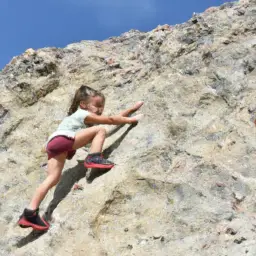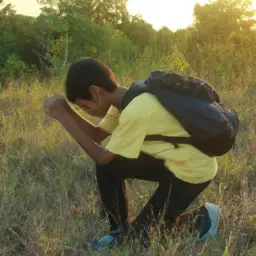If you’re a teacher working with at-risk students, you know that supporting their grit development is crucial for their academic success. But with the unique challenges that at-risk students face, it can be difficult to know where to start. That’s where teacher intervention strategies come in.
By implementing these strategies, you can help your at-risk students develop grit and achieve their full potential.
To begin with, it’s important to understand the specific challenges that at-risk students face. These students may come from low-income families, have a history of trauma, or struggle with learning disabilities. These challenges can make it difficult for them to persevere through difficult tasks and setbacks.
However, with the right support and intervention, at-risk students can develop grit and resilience, allowing them to overcome obstacles and succeed in the classroom and beyond.
In this article, we’ll explore some effective teacher intervention strategies for supporting at-risk students in their grit development.
Key Takeaways
- Providing support for basic needs can alleviate stressors hindering a student’s ability to focus on their education.
- Teaching growth mindset is a powerful tool for supporting at-risk students in their grit development.
- Offering one-on-one tutoring or mentoring can create a safe space for at-risk students to build resilience and develop grit.
- Creating a safe and inclusive classroom environment where students feel comfortable sharing their struggles and seeking help when needed is crucial for supporting at-risk students in their grit development.
Understand the unique challenges faced by at-risk students
You’ll need to understand the unique challenges faced by at-risk students if you want to effectively support them in developing grit. These students often come from low-income households, have experienced trauma, and may lack access to resources that support their academic success. They may also face social and emotional challenges, such as anxiety and depression, that can make it difficult for them to stay motivated and engaged in their education.
To address these challenges, it’s important to consider both the impact of environment and potential solutions. For example, providing support for basic needs such as food, clothing, and shelter can help alleviate stressors that may be hindering a student’s ability to focus on their education.
Teachers can also implement classroom strategies that promote positive relationships, emotional regulation, and goal-setting, all of which can contribute to a student’s development of grit. By understanding the unique challenges faced by at-risk students and implementing targeted interventions, teachers can help foster a sense of resilience and perseverance that can benefit students both in and outside of the classroom.
Build Positive Relationships with At-Risk Students
Establishing a genuine connection with struggling learners is key to fostering an environment conducive to academic success. As a teacher, building trust with at-risk students should be a top priority. Here are some strategies to help you build positive relationships with your students:
-
Show genuine interest in their lives outside of the classroom. Ask them about their hobbies, interests, and family.
-
Listen actively and without judgment when they share their thoughts and feelings with you.
-
Celebrate their successes, no matter how small they may seem.
-
Address any trauma they may have experienced by being sensitive and understanding.
By building positive relationships with at-risk students, you can help them feel seen, heard, and valued. This can lead to increased engagement, motivation, and ultimately, academic success.
Remember, you’ve got the power to make a difference in their lives!
Teach Growth Mindset
Teaching growth mindset is like planting a seed of possibility in students’ minds, encouraging them to believe that their abilities can grow and develop with effort and perseverance. It is a powerful tool for supporting at-risk students in their grit development.
To teach growth mindset, there are various teaching strategies and classroom activities that can be incorporated into the curriculum. One effective teaching strategy is to model growth mindset through language. Use phrases like "I can’t do it yet"instead of "I can’t do it"to encourage students to see challenges as opportunities for growth.
Another strategy is to encourage students to reflect on their learning process by asking questions like "What did you learn from this mistake?"or "What could you do differently next time?"Classroom activities such as goal-setting and self-reflection exercises can also promote growth mindset and help students develop their grit.
By teaching growth mindset and providing opportunities for students to put it into practice, educators can help at-risk students develop the resilience and perseverance needed to overcome obstacles and achieve their goals.
Set Realistic, Achievable Goals
Setting realistic and achievable goals is key to fostering growth and perseverance in any individual. As a teacher, you can support at-risk students in their grit development by helping them set goals that are not too ambitious or too easy. By doing so, you can help them build their confidence and sense of achievement, which in turn will help them develop resilience and overcome obstacles.
When setting goals, it’s important to make sure that they are specific, measurable, and time-bound. This means that they should be clear and concrete, so that students can track their progress and feel a sense of accomplishment when they achieve them.
Additionally, goals should be challenging, but not so difficult that they are impossible to reach. By helping your students set realistic and achievable goals, you can provide them with a framework for developing their grit and perseverance, which will help them overcome obstacles and succeed in school and beyond.
Provide Structured Support
If you want to provide structured support to at-risk students in their grit development, you can start by offering one-on-one tutoring or mentoring sessions. This will allow them to receive personalized attention and guidance to help them overcome obstacles and stay on track.
Additionally, you can provide extra time for assignments and tests, as well as offer additional resources such as classroom materials and technology to help them succeed. By implementing these strategies, you can provide a supportive environment that helps students develop their grit and achieve their goals.
Offering One-on-One Tutoring or Mentoring
By providing one-on-one tutoring or mentoring, you can create a safe space for at-risk students to build resilience and develop grit, ultimately helping them succeed in their academic and personal lives. Offering this kind of personalized attention can help students feel valued and supported, which can be especially important for those who may be struggling in other aspects of their lives.
With the guidance of a tutor or mentor, students can work through challenging coursework, develop study skills, and build confidence in their abilities. Benefits of one-on-one tutoring or mentoring include the ability to tailor instruction to the student’s individual needs, as well as the opportunity to build a strong, trusting relationship between the student and their tutor or mentor.
However, it is important to measure the effectiveness of these interventions in order to ensure that they are making a positive impact on the student’s academic progress. While one-on-one support can be incredibly beneficial, it is not a one-size-fits-all solution, and there may be limitations to what can be achieved through this kind of intervention.
By carefully evaluating the impact of one-on-one tutoring or mentoring, educators can continue to refine their approaches and provide the best possible support for at-risk students.
Providing Extra Time for Assignments and Tests
Allowing students additional time for assignments and tests can create a more relaxed and less stressful environment, giving them the opportunity to fully demonstrate their knowledge and abilities. This can be especially beneficial for at-risk students who may struggle with time management or have a harder time managing stress.
By providing extra time, teachers can help these students feel more confident in their abilities and reduce the pressure they may feel to complete tasks quickly. However, it’s important for teachers to ensure that this extra time is used effectively and efficiently. Encouraging students to use this time wisely and providing guidance on how to manage time effectively can help them develop important skills that will benefit them in the long run.
Teachers should also be mindful of how much extra time is given, as too much can lead to procrastination or a lack of motivation. By finding the right balance, teachers can support at-risk students in their grit development and help them succeed academically and beyond.
Offering Additional Resources, such as Classroom Materials and Technology
You can enhance your learning experience by taking advantage of the additional resources available in the classroom, such as technology and materials. The use of classroom technology can aid in your understanding of difficult concepts, as it allows for interactive and engaging activities.
Additionally, having access to a variety of materials, such as textbooks, articles, and videos, can provide different perspectives on a topic and further deepen your knowledge.
To fully utilize these resources, it’s important for teachers to allocate them effectively. This can be done by creating a designated area for materials and ensuring that technology is functioning properly. Teachers can also provide guidance on how to effectively use these resources, such as offering tips on how to navigate online databases or suggesting specific articles to read.
By making additional resources easily accessible and providing guidance on their use, teachers can help at-risk students develop their grit and succeed academically.
- Utilize classroom technology for interactive and engaging activities.
- Access a variety of materials, such as textbooks, articles, and videos.
- Ensure resources are allocated effectively, with a designated area for materials and functioning technology.
- Provide guidance on how to effectively use resources, such as navigating online databases and suggesting specific articles to read.
Foster a Growth Mindset Community
You can foster a growth mindset community by encouraging collaboration and support among students. This can be achieved through group projects, peer tutoring, and team-building activities.
Involving parents and guardians in the learning process can also help create a supportive environment, as they can provide additional resources and encouragement for their children.
Additionally, recognizing and celebrating grit and success in the classroom can motivate students to persevere through challenges and develop a growth mindset.
Encouraging Collaboration and Support among Students
By fostering a sense of community and teamwork in the classroom, you can encourage your students to collaborate and support each other in their grit development journey. Peer collaboration can be a powerful tool in helping at-risk students develop grit, as it creates a supportive environment where students can learn from each other’s experiences and perspectives.
As a teacher, you can facilitate this collaboration by assigning group projects or activities that require students to work together towards a common goal. This not only promotes collaboration but also helps build teamwork skills that are essential for success in the real world.
In addition to peer collaboration, it’s important to provide teacher support to at-risk students in their journey towards developing grit. You can do this by checking in with students regularly, providing feedback on their progress, and offering guidance and resources to help them overcome obstacles.
It’s also important to create a safe and inclusive classroom environment where students feel comfortable sharing their struggles and seeking help when needed. By fostering a sense of community and encouraging collaboration and support among your students, you can help them develop the grit and resilience needed to succeed both in and outside of the classroom.
Involving Parents and Guardians in the Learning Process
Involving parents and guardians in the learning process can be a valuable way to support students’ growth and success in developing important life skills. Parental involvement has been shown to have a positive impact on student achievement and can also play a crucial role in fostering grit and perseverance.
When parents are engaged in their child’s education, they can provide additional support and encouragement, helping to build their child’s confidence and resilience. To involve parents in the learning process, teachers can implement communication strategies such as regular updates on student progress, frequent parent-teacher conferences, and newsletters that highlight classroom activities and upcoming events.
Teachers can also provide resources and support for parents to help them understand their child’s academic and social-emotional needs. By working together, teachers and parents can create a supportive learning environment that encourages students to take risks, learn from failure, and develop the grit needed to overcome challenges and achieve success.
Recognizing and Celebrating Grit and Success in the Classroom
Recognizing and celebrating grit and success in the classroom can create a positive and motivating atmosphere for students to strive towards their goals. It’s important for teachers to acknowledge and highlight instances where students have exhibited grit, whether it’s in their academic work or in non-academic settings. This recognition can serve as a powerful tool for building self-esteem and confidence in students, and can encourage them to continue pushing themselves to achieve their goals.
In addition to academic work, extracurricular activities can also play a significant role in developing grit in students. These activities provide opportunities for students to experience challenges and setbacks, and to develop resilience in the face of adversity. Teachers can support students in cultivating grit through extracurricular activities by encouraging them to take on leadership roles, providing opportunities for collaboration and teamwork, and acknowledging and celebrating their successes.
By recognizing and celebrating grit and success, both in and out of the classroom, teachers can help students develop the skills and mindset they need to overcome obstacles and achieve their goals.
Frequently Asked Questions
What specific interventions can teachers use to support at-risk students in developing grit?
To support at-risk students in developing grit, there are several classroom strategies and individualized supports that teachers can use.
For example, in the classroom, teachers can focus on creating a positive and supportive learning environment that emphasizes effort and growth over natural talent. This can include providing regular feedback and encouragement, setting achievable goals, and teaching students how to self-reflect on their progress.
Additionally, teachers can provide individualized support by identifying each student’s specific needs and strengths and tailoring their instruction accordingly. This might include offering one-on-one coaching, providing additional resources or accommodations, or connecting students with outside support services.
By using these strategies and supports, teachers can help at-risk students develop the resilience and persistence they need to succeed academically and beyond.
How can teachers help at-risk students overcome specific challenges such as poverty or trauma?
To help at-risk students overcome challenges such as poverty’s impact and trauma, you can use trauma-informed teaching strategies. These strategies involve understanding the impact of trauma on students’ learning and behavior and creating a safe and supportive classroom environment that fosters resilience and growth.
Additionally, you can provide resources and support services to students and their families, such as access to food, housing, and counseling. By addressing these specific challenges, you can help at-risk students develop the grit and resilience needed to succeed in school and beyond.
What resources are available to teachers to help them support at-risk students?
As a teacher, you’ve got access to a wide range of resources to help you support at-risk students.
To begin with, there are numerous teacher training programs that focus specifically on at-risk students and how to best support their needs. These programs can teach you about effective teaching strategies, classroom management techniques, and ways to build positive relationships with your students.
Additionally, there are many classroom resources available to you, such as textbooks, workbooks, and online learning platforms, that can help you tailor your lessons to meet the needs of at-risk students.
By taking advantage of these resources, you can provide your students with the support they need to succeed and overcome the challenges they may be facing.
How can teachers involve parents or caregivers in supporting at-risk students’ grit development?
To involve parents or caregivers in supporting at-risk students’ grit development, you need to establish open lines of communication with them.
Start by reaching out to them and discussing their child’s needs, strengths, and areas for improvement. Communicate regularly with them through phone calls, emails, or parent-teacher conferences to update them on their child’s progress and share strategies that are being used in the classroom to support their grit development.
Encourage parents to reinforce these strategies at home and provide them with resources and activities that they can do with their child to promote grit, such as setting goals, practicing perseverance, and celebrating small successes.
By involving parents in the process, you can create a supportive network that helps at-risk students develop resilience and achieve their academic and personal goals.
What are some common misconceptions or myths about at-risk students that teachers should be aware of?
As a teacher, it’s important to be aware of common misconceptions, stereotypes, and biases that may exist about at-risk students. It’s easy to fall into the trap of thinking that these students are lazy, unmotivated, or just not interested in learning. However, this couldn’t be further from the truth.
At-risk students often face a variety of challenges outside of the classroom that can impact their ability to succeed academically. Additionally, the impact of teacher beliefs cannot be overstated. If you approach these students with a negative attitude or low expectations, they’ll pick up on that and it’ll only serve to reinforce their own negative self-perceptions.
Instead, it’s important to approach these students with empathy, understanding, and a belief that they can succeed with the right support and intervention.
Conclusion
Overall, supporting at-risk students in developing grit is crucial for their success both in and out of the classroom. It’s important to understand the challenges these students face and build positive relationships with them.
By teaching growth mindset and setting realistic goals, teachers can help students see their potential and develop the perseverance necessary to achieve their objectives. Providing structured support and fostering a growth mindset community are also essential components in the development of grit.
By implementing these strategies, teachers can create a supportive and encouraging environment that empowers at-risk students to overcome obstacles and succeed in their academic and personal lives. As educators, it’s our responsibility to ensure that all students have the tools and support necessary to reach their full potential.















































































































